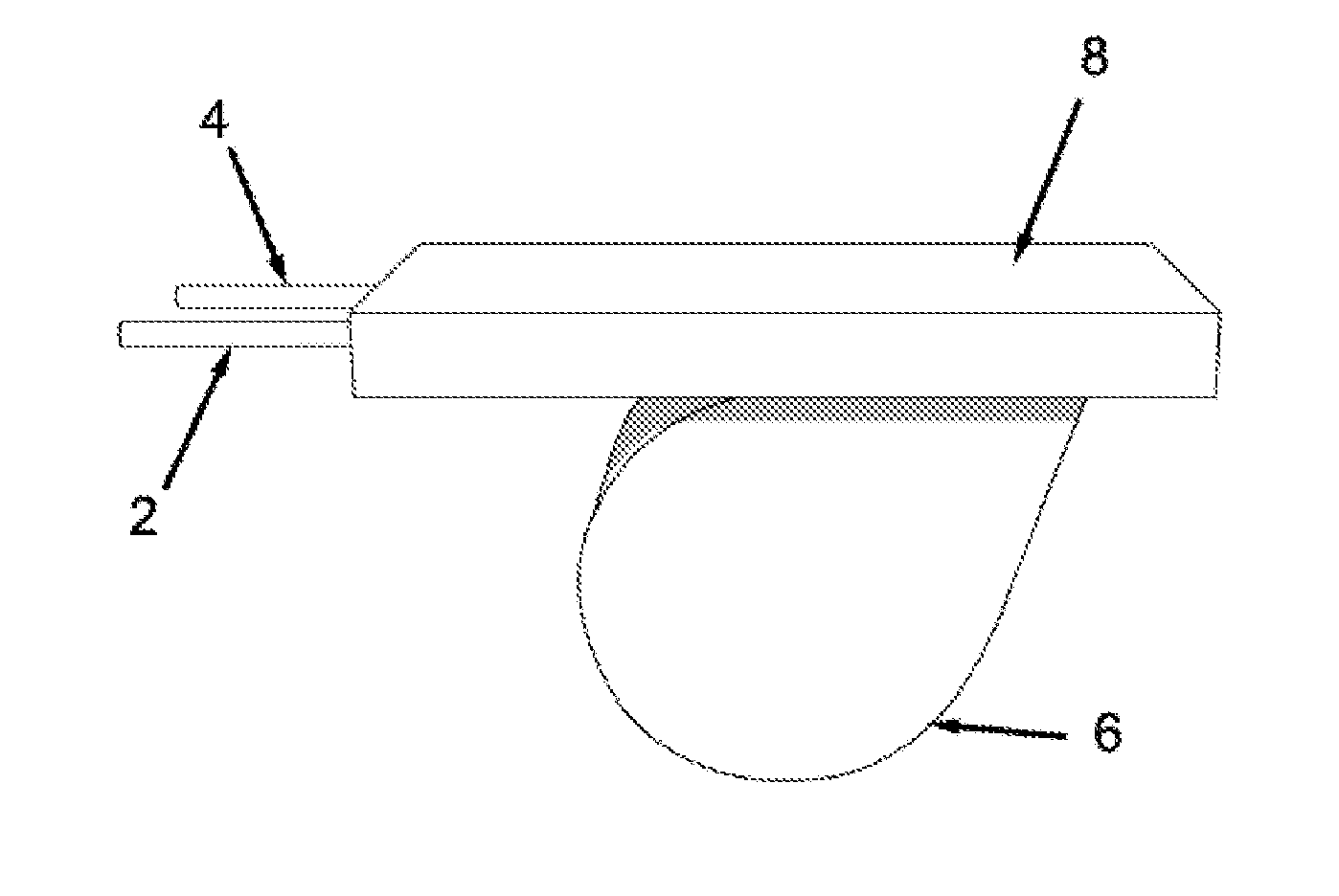Locking Device Using Shape Memory Materials
a technology of shape memory and locking device, which is applied in the direction of mechanical control device, osteosynthesis device, motor, etc., can solve the problems of complex linkage and mechanism to achieve similar functionality, large current electrical device size, and high construction cost of electrical devices, so as to achieve the effect of significantly reducing the energy requirements for activating or deactivating shape memory polymers or shape memory materials, and reducing the overall cost of locking devices
- Summary
- Abstract
- Description
- Claims
- Application Information
AI Technical Summary
Benefits of technology
Problems solved by technology
Method used
Image
Examples
example 1
[0038]A polymeric reaction mixture was formulated by mixing vinyl neodecanoate (7%), divinyl benzene (1%), and styrene (90%) in random order to yield a clear solution. Benzoyl peroxide (2%) was then added to the resulting solution (all composition % are by weight). The resulting solution was kept cold in a refrigerator before use. To prepare the shape memory polymer (SMP), the reaction mixture formulated above was placed in a flat mold. The mixture is then heated in an oven maintained at atmospheric pressure and a temperature of 75° C. for 24 hours. After the material is cured for the specified period of time, it is removed from the oven and allowed to dry and cool down to room temperature. The material is removed from the mold and cut into the desired shapes.
example 2
[0039]A polymeric reaction mixture was formulated by mixing vinyl neodecanoate (7%), divinyl benzene (1%), and styrene (60%) in random order to form a colorless solution. Polystyrene granules (30%) were then added to the resulting solution. The resulting mixture was then allowed to sit at room temperature with occasional stirring until all the polystyrene granules were dissolved to give a clear, viscous solution. Benzoyl peroxide (2%) was then added to the resulting solution (all composition % are by weight). The resulting mixture is ultrasonicated at room temperature for 15 minutes to yield a clear solution. The resulting solution is kept cold in a refrigerator before use. To prepare the shape memory polymer (SMP), the reaction mixture formulated above was placed in a flat mold. The mixture is then heated in an oven maintained at atmospheric pressure and a temperature of 75° C. for 24 hours. After the material is cured for the specified period of time, it is removed from the oven a...
PUM
 Login to View More
Login to View More Abstract
Description
Claims
Application Information
 Login to View More
Login to View More - R&D
- Intellectual Property
- Life Sciences
- Materials
- Tech Scout
- Unparalleled Data Quality
- Higher Quality Content
- 60% Fewer Hallucinations
Browse by: Latest US Patents, China's latest patents, Technical Efficacy Thesaurus, Application Domain, Technology Topic, Popular Technical Reports.
© 2025 PatSnap. All rights reserved.Legal|Privacy policy|Modern Slavery Act Transparency Statement|Sitemap|About US| Contact US: help@patsnap.com



